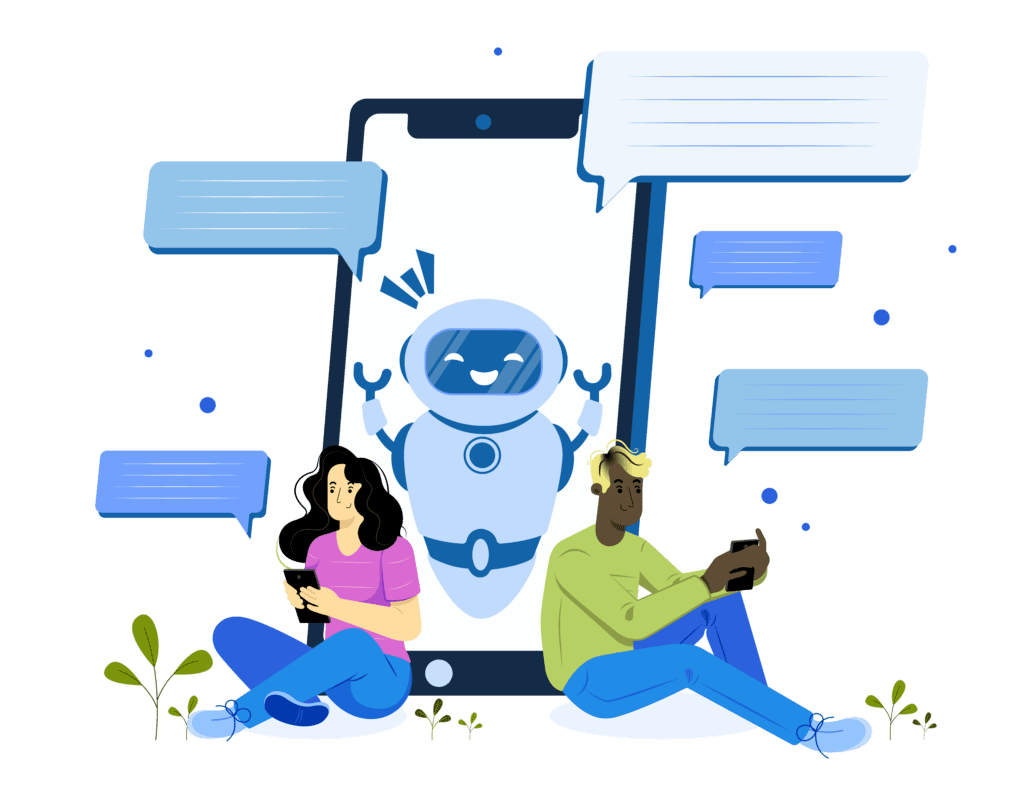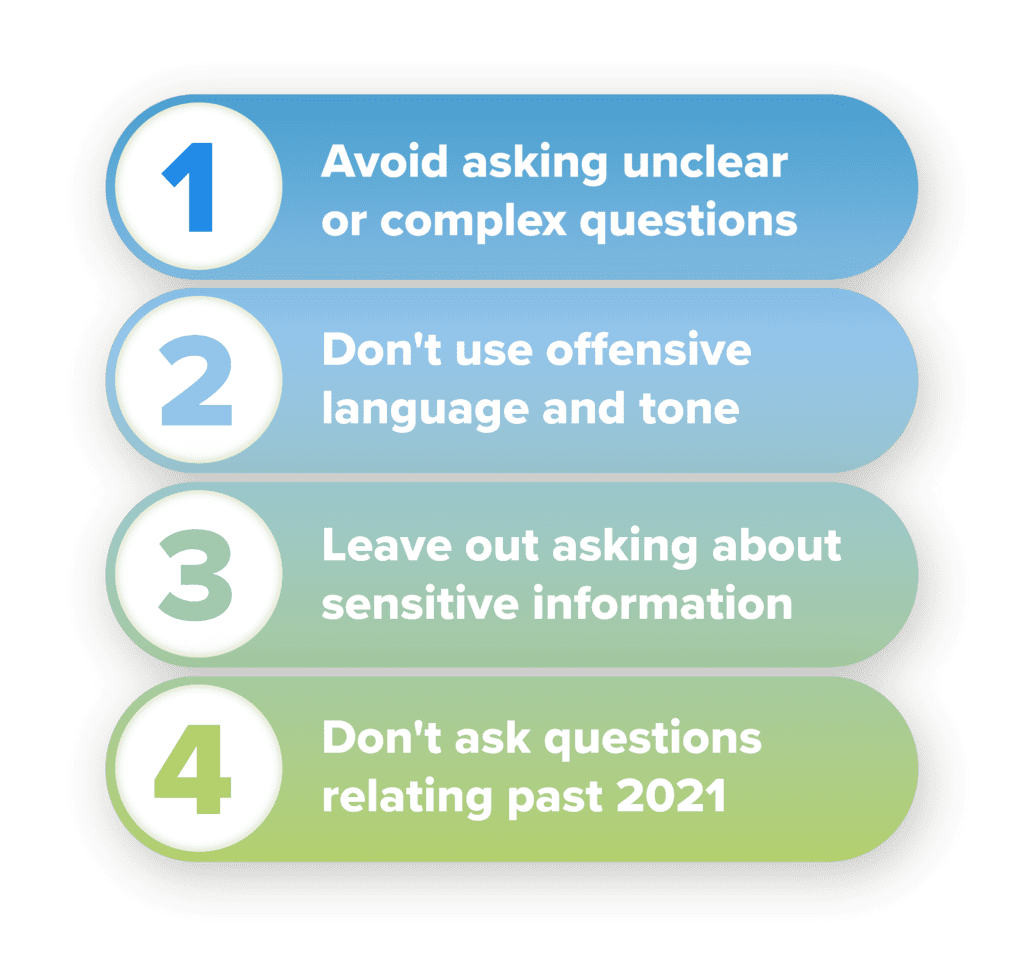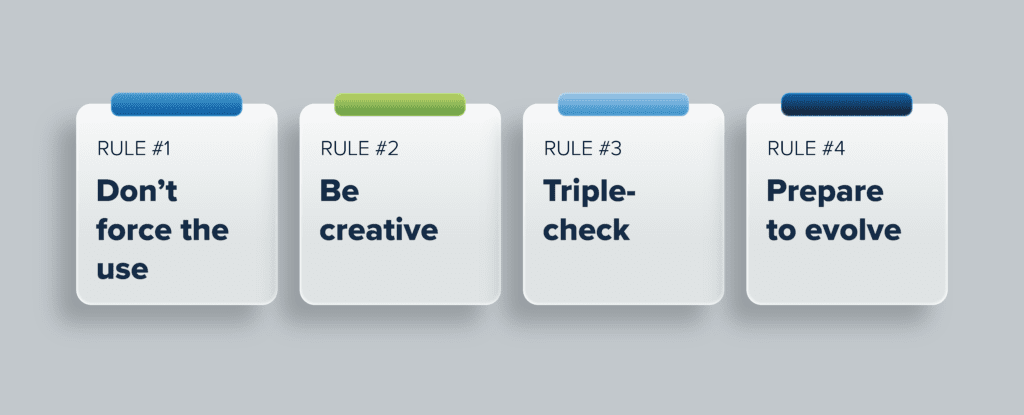
Wondering how to ask ChatGPT a question — and in a way that actually gets a useful answer? As talented as ChatGPT is, it can often provide some vague, surface-level answers that won’t really add much value to you and your project. However, if you know how to ask questions the right way, you can unlock the impressive insight that everyone is talking about on social media.
In this article, we’ll give you all the tips and tricks for asking AI a question and getting the most out of its programming. Let’s dive in!
What is ChatGPT?
ChatGPT is the latest hit in AI language technology. The language model was developed by the company OpenAI and is based on the Generative Pre-trained Transformer (GPT) architecture. The system is designed to generate human-like responses to natural language input. Its base model is currently free for any user, making it useful for a variety of applications.
ChatGPT has been trained on a significant amount of text data and can generate coherent, context-aware responses to a wide range of inquiries. Functionally, it is a simplistic, user-friendly website where users can source a variety of helpful AI writing, research, and outputs.
How ChatGPT Actually Works
ChatGPT is an AI chatbot that provides conversational, human-like text responses to questions and commands. It relies on its knowledge base from the training it went through before being released to the public.
It attempts to comprehend the prompt a user submits and then responds with an answer that it predicts will be relevant based on the data it was trained on. The AI was exposed to massive amounts of data and information to develop its own algorithms for different situations.
According to Zapier, GPT-3 was trained on around 500 billion tokens. These tokens allow the language models to assign meaning and provide more plausible responses. During training, the AI was exposed to a vast number of tokens from data across different topics on the open internet such as books, articles, and other documents written by humans.
ChatGPT learned patterns and relationships between text data to predict what text should be spat out as a response for any given sentence. With this said, it sometimes spits out incorrect information that the developers are trying to address.
ChatGPT-4 was released in March 2023 and has since addressed some of the issues users had with GPT-3. According to OpenAI, “GPT-4 was trained on Microsoft Azure AI supercomputers.” This training data helped create a more advanced system that produces more useful, innovative, and creative responses.
One of the coolest things about ChatGPT is that it remembers past conversations you’ve had with it and uses the chat history to inform its responses. This will come into play in the next couple of sections about how to get the best responses from this tool.
How to Ask ChatGPT a Question [With Input from ChatGPT]
Here’s a fun exercise. This section was created by ChatGPT and edited by a human copywriter. Notice how the text is easy to read and to the point, offering great insight into the ChatGPT process.
“Here are some tips to get the best responses from me:
- Be clear and specific: Provide as much information as possible and use clear and concise language. The more specific you are, the easier it is for me to understand your question and provide an accurate response.
- Use proper grammar and spelling: Proper grammar and spelling can help me better understand your question, resulting in a more accurate response.
- Avoid using slang or jargon: Informal text can make it difficult for me to understand your question, so use plain language instead.
- Provide context: Providing context or background information can help me better understand your question and provide a more accurate response.
- Ask one question at a time: Asking one question at a time can help me focus on answering that question specifically rather than getting confused or overwhelmed with multiple questions at once. Ask follow-up questions if necessary.
Yes, there are some ways you should avoid phrasing questions to ChatGPT to ensure you get the best response possible. Here are some tips on what to avoid:
- Avoid asking unclear or complex questions: Questions that are too complex or unclear can make it difficult for me to understand what you are asking, resulting in an incorrect response.
- Avoid using offensive language or tone: Using offensive language or a negative tone can create a negative atmosphere and may lead to less helpful responses.
- Avoid asking for personal or sensitive information: As an AI language model, I cannot provide personal or sensitive information. Therefore, it is best to avoid asking for such information.
- Avoid asking questions outside my knowledge base: While I am trained to know a wide range of topics, there may be some areas where I have limited knowledge. So, it’s best to avoid asking questions that are outside my knowledge base.
By avoiding these pitfalls, you can ensure that you receive the best possible responses from me.”

Deep Dive: ChatGPT Limitations
ChatGPT isn’t perfect software, and it may have more limitations than assumed. Understanding the limitations of the AI assistant helps users avoid potential pitfalls and get the most out of the system as it exists today.
Keep in mind that OpenAI is constantly updating, tweaking, and adding to ChatGPT. The limits it has now may be altered or fixed in the future. For now, here are some of its biggest speedbumps:
Young System
Occasionally, ChatGPT will be overloaded with users and shut down temporarily. Remember, this is a new system. It has bugs and errors more frequently than other programs simply because it’s young.
If you’re attempting to use ChatGPT and it freezes on you, just take a deep breath, close down the program, and try again later when the servers have less traffic volume.
Limited Knowledgebase
Officially, the AI was trained with the internet as it was in 2021. This means that you can’t get fully up-to-date info with ChatGPT. When it comes to many queries, this isn’t a big deal.
For example, facts on the history of NYC or tiger biology have mostly stayed the same in the past few years. Just be mindful of what you’re searching for and how relevant ChatGPT’s information source may be.
There may be upcoming plugins that can literally search the internet in real-time. However, these programs aren’t yet widely available, so we can’t attest to their accuracy and reach.
Incorrect Information
ChatGPT likes to occasionally do this thing where it will produce false, misleading, or biased information. Therefore, it is important to vet the responses you receive from ChatGPT, and to be careful of the language you use when phrasing questions. Certain sentences can unintentionally give the algorithm too much freedom to create responses that aren’t 100 percent accurate — that’s why question formation is a true skill when it comes to interacting with AI.
Examples and Best Practices
Here we’ve gathered some general examples of best practices for getting the most out of ChatGPT. Play around with these guidelines and discover what works best for you to get the most helpful answers.
Add More Detail
Sometimes the generated responses are too simplistic or short for your goals. For example, maybe I’m hoping to learn more about marketing agencies before hiring one.
This answer is solid, but if you’re looking for a deeper understanding, go ahead and ask ChatGPT for more detail.
Now you have too much information to fit on one page. This is a simple method for getting the most out of ChatGPT.
Regenerate/Thumbs Up and Thumbs Down
At the bottom of every screenshot from ChatGPT you can see a little button that says ‘regenerate.’ Clicking this will redo ChatGPT’s latest answers. For example:
After regenerating the answer looks like this:
The new answer may not be what you’re looking for, but you can regenerate as many times as you wish. If after a few tries you still aren’t ending up with the ideal answer, consider reformatting your inquiry.
Condense Answers
Sometimes, ChatGPT will spit out wrong answers that are too long-winded. If that happens to you, it’s a simple fix. Just request that it condense the answer. Give it the command of “condense this” or “shorten your answer” and it will take the response it gave and formulate it to share the same detailed information in fewer words.
For example, ChatGPT’s response was much longer than I needed in this case.
So, I told ChatGPT to condense its response and this is what happened.
Ask for Sources
When using ChatGPT, you may sometimes want to see what sources were used for the response it gave. In this case, after you ask the question and ChatGPT responds, give it the command of “share your sources.”
In this example, ChatGPT was able to give specific sources relevant to the response. However, it will not always do this. Sometimes it may not give specific sources but rather reference general online sources.
Other Applications for ChatGPT
There’s an immense amount of things you can use ChatGPT for and it’s only growing. From creating meal plans and writing blog outlines to coding websites and writing poetry, ChatGPT has a wide array of use cases.
Here are some applications for ChatGPT beyond using it like a search engine. You can use ChatGPT to:
- Write poetry
- Find recipes
- Write code
- Compose music
- Write a resume or cover letter
- Solve math problems
- Explain complex topics
- Write social media captions
- Make recommendations
- Write original jokes
- Draft essays
- Find errors in code
- Create a quiz
- Write biographies
- Write product descriptions
- Translate text
As you can see, ChatGPT is a powerful tool with many uses. This is just the beginning, and with further development, ChatGPT may eventually become a much more important tool.
Should You Use ChatGPT?
Is ChatGPT right for you to use? A laundry list of questions accompanies this, some of which center around the ethical use of the platform, while others focus on effectiveness. Do the pros outweigh the cons?
If you watch the news, are active on social media, or talk to colleagues, there is a small chance you haven’t heard about this revolutionary AI tool. ChatGPT has become its own buzzword. While this exciting tech is groundbreaking, it is also imperfect and could be dangerous if not used with guidelines in place.
Rule #1: Don’t force the use of ChatGPT
- Everyone and their mother is using this software. It is the new kid on the block, and yes, it does some pretty cool things. However, it isn’t a solution for everyone or everything. In many cases using ChatGPT can delay your productivity in cases where it provides wrong information, you spend too much time asking the right type of ChatGPT prompts, editing responses for more natural-sounding language, etc.
Rule #2: Be creative
- With over 100 million users and over 1 billion site visits a month, this algorithm is getting a TON of use. Therefore, so many users are leveraging AI for similar needs. In order to produce unique content, you must think outside the box when it comes to your interactions with the platform.
Rule #3: Triple-Check Its Work
- As hinted, ChatGPT can produce some wrong information. Therefore, you need to ensure that if you use it, you can double and triple-check the responses for factuality.
Rule #4: Be Ready to Evolve
- There was a popular LinkedIn post that recently stated: “ChatGPT isn’t going to take your job, but someone who knows how to best use this AI, will.” That’s the truth. While it might not make sense to use ChatGPT now for your business or organization, there will come a time when AI infusion will happen, and you need to be ready to know how to marry human skill with tech possibilities. Keeping up with ChatGPT trends, evolution, and other AI developments is critical to gaining benefits from these new technologies.

The Bottom Line
The usefulness of ChatGPT often can depend on the human interacting with it, which means it’s essential to know how to ask ChatGPT a question. The tips and tricks we shared in this article will help you get the most out of the AI’s current capabilities.
Remember to be specific, provide as much context as possible, understand its limitations, and take responses with a grain of salt. While ChatGPT represents advancement in artificial intelligence, it is not a replacement for human brain power.
